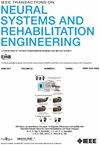Intracranial Disease-Region Composite- Interpretation Technology for Enhanced Source Localization in Pediatric Epilepsy Surgery
IF 4.8
2区 医学
Q2 ENGINEERING, BIOMEDICAL
IEEE Transactions on Neural Systems and Rehabilitation Engineering
Pub Date : 2024-12-11
DOI:10.1109/TNSRE.2024.3514940
引用次数: 0
Abstract
Electroencephalography (EEG) based source localization (ESL) is a useful method to localize the epileptogenic zone in epilepsy surgery. However, previous techniques only perform 3-dimensional (3D) reconstruction, and do not conduct delineation on the cortex surface as a resection guidance, and there is very little data on intracranial EEG and pediatric cases. This study proposes an Intracranial Disease-region Composite-interpretation (IDC) EEG-based source localization (ESL) scheme that uses 3D extended reality (XR) edge computing to enhance visualization and comprehensive interpretation of intracranial EEG-based source localization (iESL) for patients with pediatric epilepsy. The proposed IDC-ESL method was effective in predicting the surgical outcome in patients with focal epilepsy, which can be effectively used for epilepsy surgery. Seizure freedom was clearly associated with complete resection of combined EEG features of interictal spike, high-frequency oscillation (HFO), and seizure onset zone (SOZ), and it had the highest significance in localizing the epileptogenic zone. However, for patients with Lennox-Gastaut syndrome (LGS), IDC-ESL was not performed effectively because of a deeply seated lesion and multifocal abnormalities. It could only roughly estimate the affected area, mainly because of insular involvement. Cautious interpretation based on intraoperative electrocorticography (ECoG) is required for accurate insular resection, particularly for LGS cases.颅内疾病-区域复合解读技术用于加强小儿癫痫手术的病源定位
本文章由计算机程序翻译,如有差异,请以英文原文为准。
求助全文
约1分钟内获得全文
求助全文
来源期刊
CiteScore
8.60
自引率
8.20%
发文量
479
审稿时长
6-12 weeks
期刊介绍:
Rehabilitative and neural aspects of biomedical engineering, including functional electrical stimulation, acoustic dynamics, human performance measurement and analysis, nerve stimulation, electromyography, motor control and stimulation; and hardware and software applications for rehabilitation engineering and assistive devices.

 求助内容:
求助内容: 应助结果提醒方式:
应助结果提醒方式:


